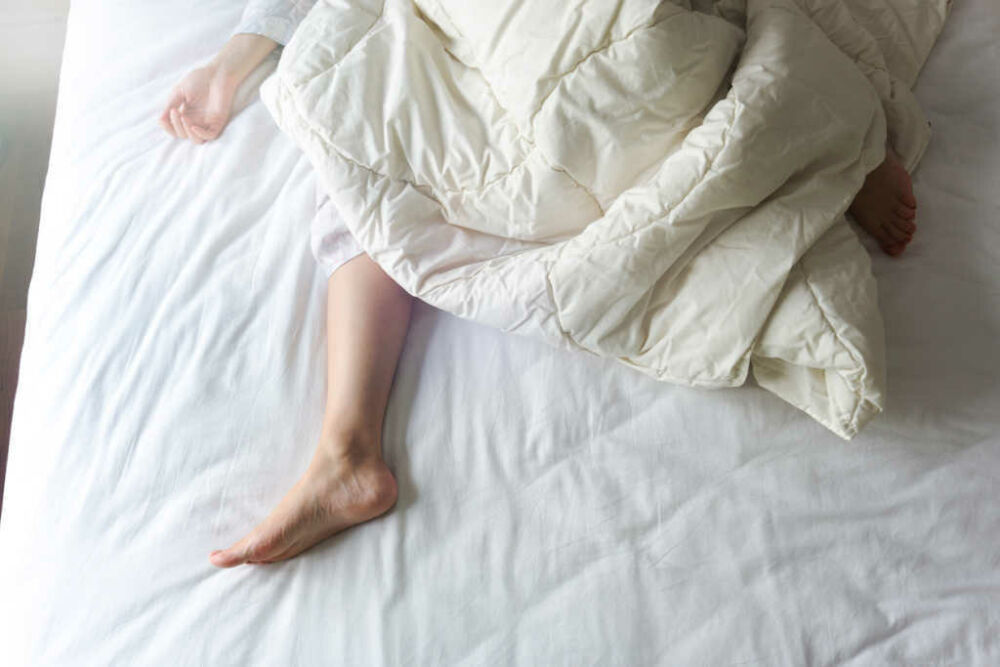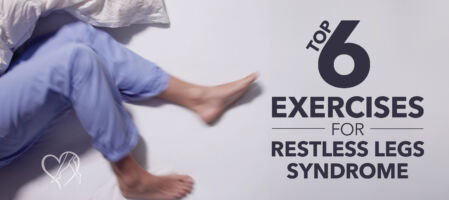
Treatment for Restless Legs Syndrome
Restless Legs Syndrome (RLS) is a common condition, affecting 2-4% of the adult population. Although its cause is not completely known there may be an association between RLS and chronic venous insufficiency.

Do you experience unpleasant sensations in your legs that make it impossible to stay still, especially at night? Restless legs syndrome (RLS) causes throbbing, itching, and crawling sensations in the legs, disrupting sleep and leaving you tired during the day. For many, RLS symptoms can be linked to underlying vein problems, such as varicose veins or venous insufficiency, making it essential to address both conditions for lasting relief.
One proven way to ease RLS symptoms and improve leg health is through exercise. This blog highlights six of the best exercises for restless legs syndrome designed to promote relaxation, improve circulation, and strengthen problem veins.
RLS affects seven to ten percent of Americans, according to the National Institute of Neurological Disorders and Stroke (NIH). The condition often worsens when you're at rest, leading to a frustrating cycle of sleepless nights and fatigue. While the exact cause of RLS isn’t fully understood, it’s linked to several factors, including:
A study reported in Sage Journals aimed to investigate the connection between restless leg syndrome (RLS) and chronic venous disorders (CVD) in patients getting treatment at a vein care practice. The researchers used a prospective design involving detailed clinical evaluations, questionnaires, and Duplex ultrasound to assess the presence of chronic venous disease (CVD) and its association with restless leg syndrome (RLS). A significant overlap between RLS and CVD was observed, including:
This study highlights a significant association between RLS and CVD, suggesting that RLS may be a common clinical syndrome in patients with venous insufficiency.
If you’re experiencing RLS, a consultation with a vein specialist can determine if vein treatment is part of the solution. At Center for Vein Restoration, we specialize in diagnosing and treating vein-related conditions to help you find lasting relief.
Call 240-965-3915 now to schedule your evaluation with one of our board-certified vein doctors and start your journey to better sleep and improved leg health!
You can also schedule your consultation online HERE.
Meanwhile, regular exercise can help manage symptoms and improve your overall leg health.
Adding these exercises to your daily routine can help alleviate RLS symptoms and support vein health. Aim for 20 to 30 minutes of low-impact exercises, preferably earlier in the day, to avoid overstimulating your legs before bedtime.
1. Calf Stretch
Stretching your calves helps relieve tension and improve blood flow.
2. Front Thigh Stretch
This stretch relaxes the thigh muscles and improves flexibility.
3. Hip Stretch
Hip stretches help release tension and improve mobility.
4. Low-Impact Aerobic Exercise
Light aerobic exercises are excellent for promoting circulation and reducing RLS symptoms.
5. Yoga and Pilates
Gentle yoga and Pilates routines can increase flexibility, reduce stress, and calm RLS symptoms.
6. Foot Pumps
This simple exercise improves circulation, especially if you spend long periods sitting or standing.
Stretching is one of the simplest and most effective ways to manage RLS, but it’s not the only strategy. To keep symptoms at bay, consider these additional tips:
Because RLS shares symptoms with vein disease, such as leg pain, swelling, and restlessness, it’s essential to address underlying vein problems. By treating venous insufficiency, you may experience relief from RLS symptoms.
Research emphasizes the need for comprehensive venous evaluations in patients presenting with RLS to identify and treat underlying venous insufficiency, potentially offering relief from both conditions.
For example, a study titled The Effect of Sclerotherapy on Restless Legs Syndrome, reported by the National Library of Medicine (NIH), found that patients with varicose vein disease respond frequently and rapidly to sclerotherapy.
Another study reported by the NIH titled The Effect of Endovenous Laser Ablation on Restless Legs Syndrome found patients who received vein treatment saw their RLS symptoms improve significantly:
At Center for Vein Restoration (CVR), our board-certified vein doctors specialize in diagnosing and treating varicose veins, spider veins, and other forms of vein disease that contribute to RLS.
Call 240-965-3915 to speak to a Patient Services Representative or schedule your consultation online at a CVR near you today.
CVR accepts many insurances, including Aetna, Amerigroup, Anthem, Blue Cross/Blue Shield, Cigna, MultiPlan, Medicaid, Medicare, and more.

Could vein disease be causing your restless legs? Contact Center for Vein Restoration to schedule a consultation with a vein expert near you. We’ll evaluate your symptoms and find out for sure. If you are a candidate for vein care, we’ll create a personalized treatment plan to help you find relief and the peaceful sleep you crave.
Find a Center for Vein Restoration location near you by calling 240-965-3915 or schedule an appointment online below.
